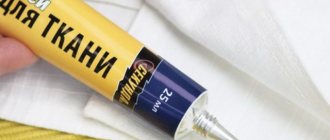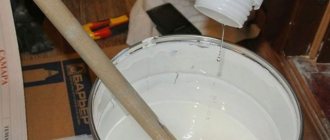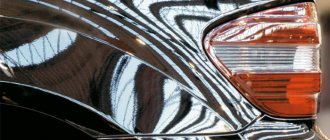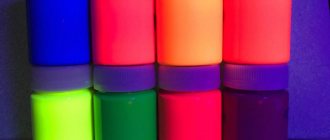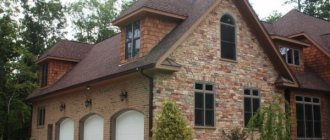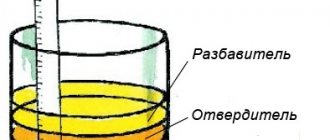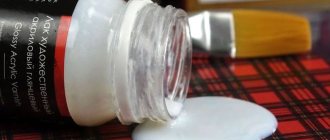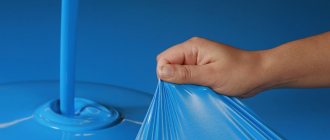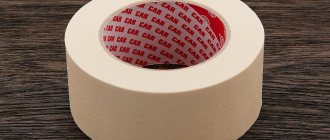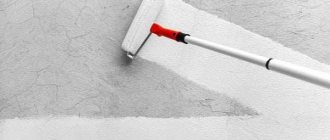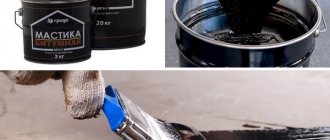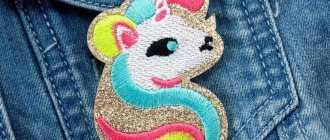Adhesive and cushioning materials are essential when sewing clothes. The cuff, collar, valve, belt and a number of other clothing parts are necessarily duplicated with adhesive fabrics. Fabric pads, as well as adhesive fabrics, are used in the sewing process, but less frequently. Mainly when sewing coats and jackets. With the help of non-adhesive cushioning materials, the sides, shelves of shoulder products, and collar are strengthened. Using double-sided adhesive tape “gossamer” you can secure the hem of the bottom of a skirt, trousers, or dress. But in most cases it is better to perform this operation with a blind seam by hand.
There are many types of adhesive woven and non-woven materials, such as gossamer, interlining, dublerin, etc. Sometimes, several types of pads are used in one piece of clothing. Depending on the thickness and density of the fabric and the purpose of the garment, the adhesive fabric or fabric lining is selected.
Adhesive materials are woven and non-woven
Woven pads have the direction of the grain thread, so when cutting you need to take this circumstance into account. Non-woven adhesive interlinings, for example adhesive interlining, are a pressed mixture of fibers; when cutting, the sections do not fray and there is no grain direction. However, even in such adhesive materials there is a direction in which the fabric stretches less. Sometimes this needs to be taken into account.
Fabric adhesive pads most often have a knitted fiber base. This adhesive fabric stretches well in all directions, is elastic and soft. They are used for duplicating almost any fabric, especially suiting fabrics. Often used for duplicating elastic and highly stretchable fabrics.
This video shows how to duplicate three different types of fabric with fabric adhesive. Each type of fabric (suit, cotton, knitwear) requires a special type of adhesive fabric.
Types and properties
Advantages of adhesive materials:
- long lasting use:
- ability to drape;
- the ability to choose double-sided or single-sided glue coating;
- strength, self-adhesive fabrics for clothing will not tear;
- flexibility.
Interlining fabrics
Adhesive bases last longer than non-woven ones. When the product is turned inside out, the fabric does not form rigid folds. But all materials differ in density and are divided into 2 main groups - elastic and inelastic.
Inelastic patches can be hard or soft. The base is made of cotton or polyester. The fabric does not stretch; it is used to give products strength and shape.
Elastic types are made from thin, lint-free knitwear for the second layer of thin fabric, lint-free knitwear for soft items and hard items. Adhesive tape is divided into subtypes: thread-stitched tape based on calico or non-woven fabric. Used to strengthen round parts.
Hot-melt interlining fabrics are textile materials - knitted, non-woven fibers, on one side of which an adhesive dot or strip coating is applied.
Hot-melt non-woven lining
Women often ask what adhesive tape for ironing fabric is called. This is a cobweb, which is a non-woven isotropic material created from a polymer melt by aerodynamic molding. Cobwebs are produced in the form of strips or canvas. The material holds the edges of the garment together, acting as hidden seams.
Cobweb
The adhesive thread is a monofilament made from a synthetic polymer. The product is intended for fastening the edges of clothing. An adhesive coating is applied to the edge materials. Products are sold as finished edges or sheets. Hot-melt edges are necessary to protect the bends of elements from stretching.
You might be interested in this Comparison of two insulation materials - holofiber and padding polyester: which is better and warmer
Adhesive thread in a spool
Adhesive film is made from a number of polymers. Appliqués are made from it and thread seams are sealed. Non-woven fabrics are distinguished by continuous or dotted adhesive placement. The proclamelin material allows you to make linings in the chest area, shoulders, for laying into small elements when sewing a coat.
r Important! Dublerin and non-woven fabric are sold in the form of canvas. They are purchased to preserve the shape of the item, decorate it, and add rigidity.
Brown interlining
Adhesive tape (web)
There are special edge gaskets in the form of tapes of various widths. They are used to reinforce waistbands, cuffs and trims. Adhesive tapes come in different densities.
In addition to such tapes, there is also a special tape - cobweb. This is a translucent tape with an adhesive coating on both sides. Thanks to this, the adhesive web is convenient to use to secure the hem of the bottom of the product. With its help, you can attach an applique or a small patch, which is also recommended to be additionally stitched.
LiveInternetLiveInternet
Quote from koko_shik
Read in full In your quotation book or community!
Adhesive cushioning materials - types and applications
Piggy bank - knitting and sewing!
Let us clarify that interlining materials refer to both woven and non-woven materials that are glued or hand-sewn to clothing parts (quilted) when sewing clothes. In this review, we will look at adhesive-based cushioning materials, which, as mentioned above, are glued to the parts of the product from the reverse side using an iron.
SOURCE
Why are cushioning materials needed?
They are indispensable when sewing clothes and are used to duplicate individual parts of a product in order to make the part more rigid and improve the appearance of the part for further work with it. This is required for rigidity, for example, when sewing jackets and coats, when sewing products from knitted fabrics - to avoid stretching of sections, etc. When sewing outerwear, a huge number of interlinings and edges are used.
What details are duplicated?
As a rule, collars, cuffs, neck facings (except for slanting ones), sides, front details (in jackets), hem and sleeve hems, armhole and neck cuts, pocket spaces, and belts are duplicated in products. For this purpose, cushioning materials are used - doublerins, non-woven fabrics, trims, edges, etc. All such materials are called cushioning materials.
From the name it follows that interlining materials are located between the layers of the product - a jacket or coat, blouse or shirt, as a rule, between the top fabric of the product (front) and the lining fabric, or between the layers of fabric of the product (on cuffs and collars).
The interlining fabrics are glued to the parts of the product from the reverse side using a hot iron with a humidifier. If the gasket is thick, you can use a piece of moistened cotton fabric - calico or gauze. As a rule, parts made from interlining fabric are cut out without seam allowances, so as not to create excess volume at the seams.
Fig.1. Duplicating a product with duplicator
Interlining materials can be used as auxiliary materials, for example, for machine embroidery. Such materials can dissolve in water. After completing the embroidery, you need to rinse the ornament in water - the embroidery will remain, and the cushioning material will be washed off.
Most cushioning materials are made according to the sandwich principle - a base on which an adhesive layer is applied and, directly, the adhesive layer itself. There are two types of adhesive layer - continuous, like a film, and dotted, applied in dots. The base on which the adhesive layer is applied is divided, in turn, into woven (thermal fabric) and non-woven (non-woven).
Adhesive gasket materials are also single-sided. In this case, the adhesive layer is applied only on one side of the base and both sides - consisting only of an adhesive layer (material without a base). The combination of the base and the adhesive layer determines the scope of application of all adhesive gasket materials.
Adhesive woven backing materials
Doublerin
Fig. 2. Jacket coat
The basis of dublerin is fabric, which is why such a gasket is also called thermal fabric. Depending on the required density of dublerin, thinner or denser fabric is used. When making elastic dublerin, knitted dublerin or stretch dublerin is used.
When cutting double fabric, the parts must be laid out along the grain, cut out without seam allowances, so as not to create additional volume along the seams. The advantages of dublerin over non-woven fabric are that it does not tear, drapes well, is durable and wear-resistant, and practically does not come off. Depending on the task, you can choose a flexible or practically non-bending dublerin (for cuffs and collars of men's shirts).
Rice. 3. Collar dublerin – thinner and denser
ADVICE! Before buying dublerin, decide what density it should be. Test on a small piece before gluing the parts of the product.
Adhesive beading
Rice. 4. Dublerin and adhesive edging
Beading is used to strengthen the shelves and sides of men's jackets and other men's clothing. There are two types of beading - without adhesive coating (quilted by hand) and with adhesive coating. Beading differs from dublerin; it is denser and is a highly specialized material.
Non-woven pads
The main representatives of non-woven cushioning materials are interlining (German: Vlieseline) and spunbond. Both of these materials have a non-woven base. Non-woven fabrics can be adhesive or non-adhesive, spunbond is only non-adhesive. These are paper-like non-woven cushioning materials based on cellulose fibers with the possible addition of polyester fibers.
Rice. 5. Non-woven fabric
Non-woven fabrics, like double sheets, come in different densities and thicknesses - from the thinnest, almost weightless, to very, very dense, similar in density to thin cardboard. Since the base of the non-woven fabric is not fabric, cutting parts can be done along the longitudinal and transverse threads, but Along the grain thread, the interlining stretches a little less. Disadvantages of non-woven fabric: thin material breaks easily, dense material is too hard and breaks easily when bent. If the parts backed with non-woven fabric are not covered with a lining, they may become frayed or peel off during wear and washing. The main advantage of non-woven fabric compared to thermal fabric is its price, it is much cheaper.
A type of interlining is thread-stitched interlining. This is non-woven fabric, which is machine quilted for durability. This kind of non-woven fabric is something between non-woven fabric and double linen. It doesn't tear and drapes well.
Rice. 6. Thread-stitched interlining
The adhesive coating of non-woven fabrics, like that of dublerin, can be dotted or continuous. Non-woven fabric width – 80, 90 or 100 cm.
Non-woven edge - thread-stitched and simple
Non-woven edges are used to strengthen individual parts of clothing that are subjected to heavy loads during sewing and use - cuts of necklines and armholes, edges of the side, bottom, etc.
Rice. 7. Strengthening the sections of the product with an adhesive edge
A threaded edge is a strip of non-woven material, typically 1 to 4 cm wide, stitched for added elasticity and strength. Also, there are thread-stitched edges with soutache cord along the entire edge - for strength.
ADVICE! The adhesive edge can be replaced with thin strips of dublerin or non-woven fabric cut along an oblique thread.
Rice. 8. Adhesive edge – thread-stitched and with soutache cord
Adhesive grosgrain tape
Grosgrain tape is used to duplicate and seal the waistband when sewing skirts and trousers. Grosgrain ribbons come in different widths and densities and are selected according to the fabric from which the product is made. Colors – white, black.
Rice. 9. Adhesive grosgrain tape
Glue webs, mesh, fleece
Glue webs and meshes are a class of cushioning materials that are woven from adhesive threads. They do not have a base and are glued between layers of the product. Such materials are used for hemming the bottom of products and sleeves, facings, etc. Cobwebs are thinner and weightless, placed on thin fabrics - thin cotton, chiffon, gauze. The adhesive mesh is more rigid and is used for denser fabrics. Sold on a strip of paper that must be removed before gluing.
Rice. 10. Glue webs
Fliesofix (German: Vliesofix) is a double-sided adhesive sheet 90 cm wide. Like the adhesive mesh, fleece is sold attached to paper on one side or without it. Flizofix, in addition to being used in clothing, is used for gluing appliqués.
Rice. 11. Flizofix
These are the main gasket materials that we wanted to tell you about.
How to choose adhesive fabric
If you use ready-made patterns from magazines, the description always includes a list of recommended adhesive fabrics and interlinings for a particular part. If you use your own patterns, then you need to take into account the properties of the adhesive and select the adhesive fabric on a prototype.
Make several samples of pieces of fabric glued with adhesive materials of different thicknesses and quality, compare them and choose the appropriate option. Recommended dimensions for fabric samples are a square with a side of 15 cm, spacers - with a side of 10 cm. All adhesive spacers become stiffer after hot ironing, but the degree of this hardness may vary, and you will determine this only on samples.
The color of the adhesive pad may also change. Some colored adhesive fabrics darken after gluing. In addition, a test piece of glued padding will clearly show how the fabric itself will change. Sometimes the interlining can change the surface of the fabric; “pimples” and traces of glue grains appear on the front side. Some adhesive fabrics can even change the structure, density and color of the underlying fabric.
Check how the fabric drapes with and without adhesive padding. Fold all samples in half and place them on the table surface without pressing down. You will see that on one sample the gasket is very soft, almost imperceptible, on another - moderate elasticity, on the third - too hard. Now you can choose the adhesive pad that you need for a specific fabric and a specific clothing model.
Check the strength of the adhesive connection between the fabric and the gasket. After hot processing, the adhesive should not come off easily from the fabric. And in some cases it’s completely impossible, mainly with adhesive non-woven fabric. Check fabric-based adhesives especially carefully. When installing the adhesive fabric using a hot iron, make sure that there are no air bubbles or unadhesive areas under the gasket.
If you glued the adhesive fabric incorrectly, run the hot iron over it again. If air bubbles still remain, steam the adhesive cloth. After abundant moistening with hot steam, the adhesive fabric can most often be separated, although traces of glue will remain on the fabric. When you completely remove the adhesive, glue a new gasket on this place.
Nonwoven interlining materials are better suited for knitted or nonwoven fabrics. For high-quality products, it is preferable to use woven interlining materials. Bonded knitted fabrics are typically soft and silky to the touch. They can be used to shape an entire product or a single part without increasing the volume, weight or rigidity of the product. If you are sewing an elegant dress with flowing folds and tails, never use adhesive fabrics and materials. Adhesive pads are more suitable for shoulder products (shirt, jacket, coat). If you are sewing a product from fabrics such as plisse, velvet, corduroy, crepe, gauze, silk or transparent fabric, it is also better not to use an adhesive pad.
Production
Glue is applied to one side of the thermal fabric; it has a rough texture. Application can be continuous, but spot application is more common. The location and size of the dots vary. The choice depends on the characteristics of the fabric being duplicated:
- for thick wool, drape or leather, choose dublerin with large points located far enough from each other;
- for thin ones, take material with small, closely spaced dots of glue.
Useful
The main advantage and distinctive feature of adhesive fabrics from non-adhesive ones is that they do not need to be attached to the parts of the product with pins and then sewn. Their use in sewing is much more convenient.
What kind of glue is used
Synthetic glue can be used on different bases:
- polyamide;
- polyester;
- polyethylene.
When heated to a temperature of 120-160 degrees and contact pressure, they first melt and then harden. They have a good degree of adhesion to tissues and skin and resistance to mechanical stress. Also resistant to temperature (up to 100 degrees, some have heat resistance up to 160 degrees), microorganisms and fungi, oils. That is, during wearing clothes, washing and simply storing them in unfavorable conditions, the dublerin does not come off.
Self-adhesive fabric comes in different densities and widths, black, white or gray. For translucent products, beige is also used.
How to put an adhesive pad on fabric
If you are using a woven non-adhesive interfacing, the interfacing material should be decoated before cutting parts out of it. Calico, calico, teak and other lining fabrics can be used as cushioning material.
The adhesive pad should be applied according to the manufacturer's instructions so that it does not bubble after washing the product. But if you don’t have such instructions, use the following tips: 1. Place the piece of the product on the ironing board, wrong side up. 2. Place the adhesive pad part on the product part with the adhesive side down (on the fabric). 3. Cover the pad with a dry or wet iron, depending on the properties of the adhesive layer. 4. Iron each section of the part for 10 seconds (without moving it from its place). Move the iron to an adjacent area so that the areas being treated overlap. Continue these steps until the entire surface of the pad is glued to the fabric (the iron should not slide over the pad while working). 5. Turn the product part over to the front side, cover with an ironing iron and repeat the gluing process. 6. After the fabric and the adhesive have cooled, check the adhesion of the gasket to the fabric; if necessary, repeat the entire process again.
How to use
It is very difficult to tear off the glued fabric. First you need to iron the part with an iron. This will help soften the adhesive. Then you can tear it off. After this, remove the remaining glue.
If, after applying the fabric on the front side, a line is noticeable between the fastened and unfastened area, then you need to slightly fluff the edge of the gasket. Students often write essays on this topic with a practical visual part.
How to use for clothing repair
The adhesive material for garments is sprayed with water from a spray bottle. Then lay it out on a flat surface and leave it for 30 minutes to dry. If you ignore this action, the fabric will shrink after the first wash. As a result, the clothes will become skewed and unsightly folds will appear on them.
Spray humidification
Important! When cutting, you need to pay attention to the direction of the grain thread - it should match that of the main fabric. There is no need to add seam allowance, it is not necessary. Otherwise, the edge will become voluminous and dense.
How to use fabric adhesive tape:
- The purchased part is applied to a specific area of the fabric. You need to lay it with the rough side facing the wrong side.
- Then iron it with an iron, which has been preheated to 100°C.
- If the processing surface is voluminous, then each centimeter of the product must be pressed and held for 5 seconds. During this time, the composition will melt and begin to work.
Ironing the gasket
Interlining tapes cut on the bias
Experienced tailors often use 2.5cm bias strips cut from cotton flannel as interfacing on silk or wool garments to create a soft neckline or armhole.
The oblique strip is sewn into the seam connecting the product part with the facing. To do this, place the product part between the bias strip and the facing. Next, you need to cut the bias strip so that it is even and flat when stitching with the product. This is a great way to beautifully process the neckline or armhole of a product. Give it a try.
Brands and cost
The main manufacturers of adhesive products are the following brands:
- Hansel, Kufner, Fulda - Germany;
- Baldin, Koenig - Belgium;
- LanourPicardie - France;
- Wilen - UK.
In Russia, materials are produced by , located in the Moscow region, and TIM-holding in Krasnoyarsk.
Important! The company, known as the first developer of non-woven fabric, also produces adhesive padding polyester.
The latest technologies make materials of higher quality, namely:
- increase the strength of joints;
- increase shape stability;
- ensure compliance with environmental cleanliness requirements;
- save thermal energy by lowering the temperature and time of the gluing process of materials.
Japanese products are sold on the Russian market. This company has been a leader in Japan in the production of adhesive materials since 2009. The company entered the European market, gradually gaining momentum.
The company achieved trust and status thanks to a combination of unsurpassed quality and flexible prices. The company strictly controls the production of materials at every stage. The manufacturer offers customers a wide range of products.
You might be interested in what synthetic winterizer is, features of its use as a filler or insulation
High-tech equipment used to create fabric has allowed products to regularly enter the European market. They are purchased at an affordable price in any quantity. The products have received certificates in Russia. They have been tested and found to fully comply with the standards and technical requirements.
Danelli adhesive products offer patented materials. They allow you to duplicate fabrics even at 5 degrees. The parts will remain resistant to washing and chemical treatment.
Manufacturer logo
The company produces all types of materials necessary for sewing outerwear, blouses, and trousers. The popularity of this brand is due to the technology of applying glue to the surface. It is distributed by computer and a clear distance between points is maintained. High quality gluing with any coating is guaranteed.
Average cost of materials:
- a product for appliques measuring 100×50 cm costs 170 rubles*;
- dublerin for a collar 260 g/m2 with a width of 112 cm will cost 360 rubles;
- a spider web on paper 112 cm costs 340 rubles;
- cobweb in a roll version, 83 cm long, 112 cm wide - about 5,000 rubles;
- non-woven fabric 75 grams per square meter, width 100 cm - 80 rubles.
Purpose of adhesive materials
If you use Burda Fashion magazines, you know that the sewing instructions contain the types of interlinings and adhesive fabrics that it is advisable to use for the models presented there. But, so that you can navigate adhesive fabrics without the magazine’s recommendations, familiarize yourself with the properties of German gaskets, which you can purchase in specialized stores. Non-woven fabric H180 is a thin, soft interlining for soft flowing fabrics (silk, viscose). Interlining H200, H250 - a denser but soft interlining for dense thin fabrics (taffeta, twill, etc.). Interlining G405 - for dense fabrics, for example, wool, flannel, velor. Interlining H31G - denim, fabric for trousers, jackets and coats. Non-woven fabric F220 - for dense, boil-resistant fabrics.
Advantages and disadvantages
Users who already know what non-woven lining is and how to use it highlight the following advantages of lining material:
- low cost;
- ease of use;
- practicality;
- huge variety of species;
- resistance to sudden fire;
- high strength, which is easy to check yourself when trying to break;
- resistance to external mechanical damage;
- low susceptibility to various contaminants;
- stable retention of the previously created shape even after strong moisture.
Among the significant disadvantages it is worth highlighting the following points:
- fragility and brittleness in thin materials, excessive density in stronger ones;
- tendency to deformation on the folds of the product;
- low wear resistance (when used open).
Interesting! Ordinary paper can also be conditionally considered one of the varieties of non-woven fabric. But it began to be produced much earlier.
What cut details need to be duplicated?
Some recommendations on which cut details you need to use adhesive fabric for.
Collars. The collar pad is cut out according to the pattern of the upper collar and placed on the upper collar, not on the lower one. If the lower collar is one-piece cut with an upper collar, then in this case the gasket is glued to the upper part of the collar. If the collar is cut with a stand, then the interfacing is also applied to the top part of the collar and the part of the stand adjacent to the neck. Separately, you can cut out a spacer (and glue it) for the outer part of the stand (without the lower collar).
Shelves for coats and jackets. In products with lapels, the padding is placed on the edge of the product. The edge of the hem and the lining is overcast or processed in any of the possible ways.
Leaflets, flaps, cuffs and waistband. The gasket is placed on the part that will be the top in the finished product.
Assortment of items
Adhesives are presented in different forms with their own characteristics and purposes.
- Dublerin is a one-sided woven or knitted interlining. Sold in sheets 80-150 cm wide. The material is cut into strips for processing straight parts.
- Non-woven fabric is a one-sided or double-sided adhesive fabric made from cellulose and polyester fibers. There are rolls 30-100 cm wide and grosgrain ribbon with stitched texture.
- The side seal is a non-woven cotton material resembling felt. Suitable for gluing the bottom, walls, and handles of bags.
- Decovil is a leather-like version of non-woven fabric. Used as a seal for bags, backpacks, belts.
- Adhesive padding polyester is a dot-based fabric sealant.
- Gossamer is an adhesive tape for fabric made of polyamide threads with or without paper backing. Narrow tapes are most often used, but there are also meter rolls.
Fabric selection
The flazeline gasket is selected exclusively for the specific material from which the products are planned to be sewn. Usually, experienced craftsmen know how to use non-woven fabric, so they stock up on several varieties of such material in advance. To determine the most profitable option for yourself, you should put completely different types of non-woven strips on a small piece of the main fabric, then carefully iron them and analyze the result. The most suitable is considered to be the non-woven material that is completely impossible to notice from the front side of the product and is held most firmly on the base.
Before buying cushioning material, you need to think about what fabric it is suitable for and for what purpose it will be used Source tkanix.guru
For inexperienced craftswomen, modern fashion magazines with different patterns and patterns for embroidery must include information about interlinings.
| Nonwoven brand | Thickness (mm) | Duration of gluing, s | Application |
| N-180 | 0,35 | 8 | Lightweight, lightweight fabrics |
| N-200 | 0,32 | 8 | Lavsan, cotton |
| N-405 | 0,4 | 8 | Viscose, silk |
| N-410 | 0,4 | 10 | Any fabrics |
| N-420 | 0,4 | 10 | Leather, velor |
Important! The density of the selected non-woven backing must necessarily correspond to the type of main fabric. Otherwise, there is a high probability that the lining will subsequently deform the working material.
The density of the selected non-woven backing should correspond to the type of main fabric Source i0.wp.com
